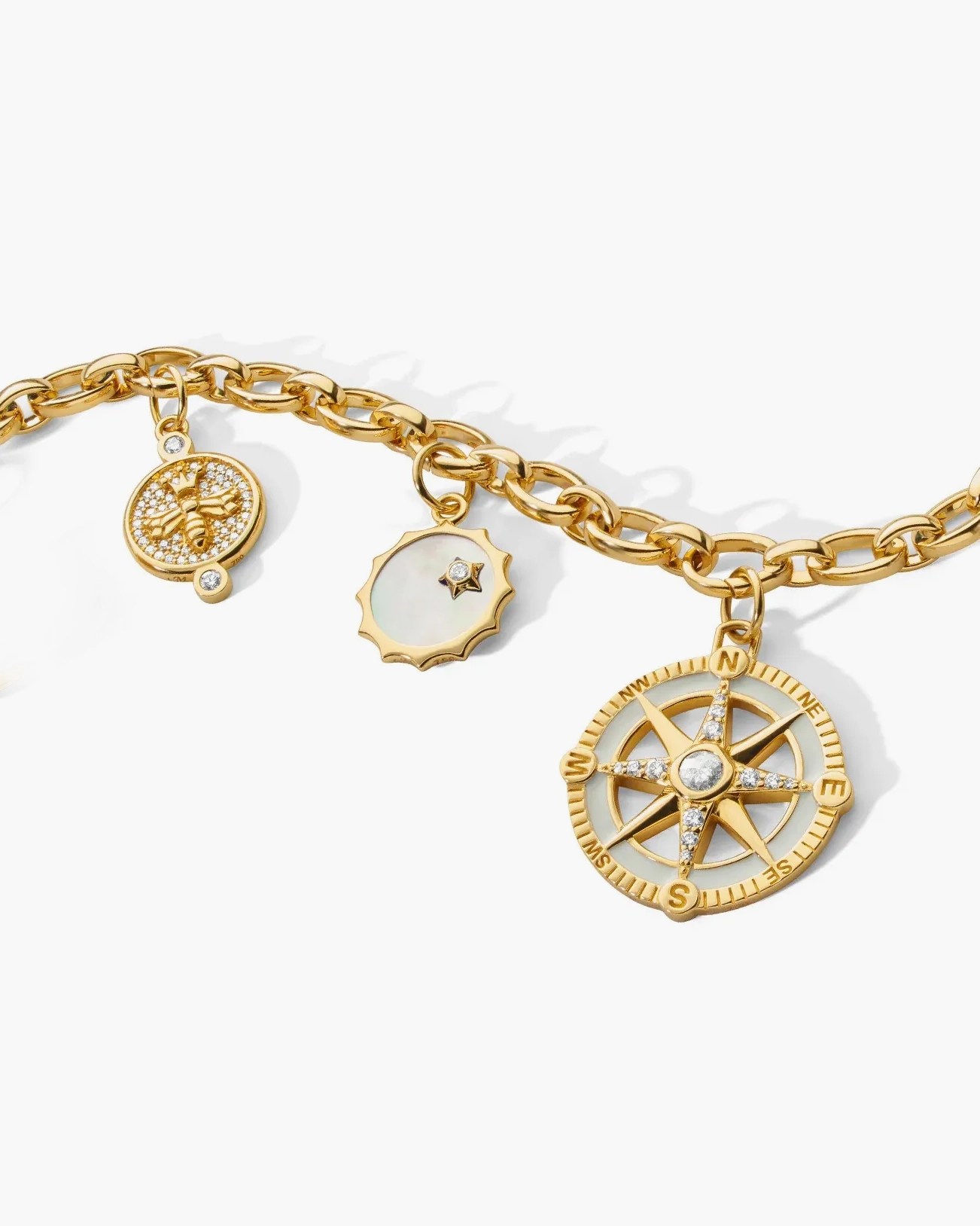NDC x BIJC Officially Launch Jewelry Education Program
Together, Natural Diamond Council and Black in Jewelry Coalition have officially launched the Jewelry Education Program at Baldwin High School to empower future jewelers.
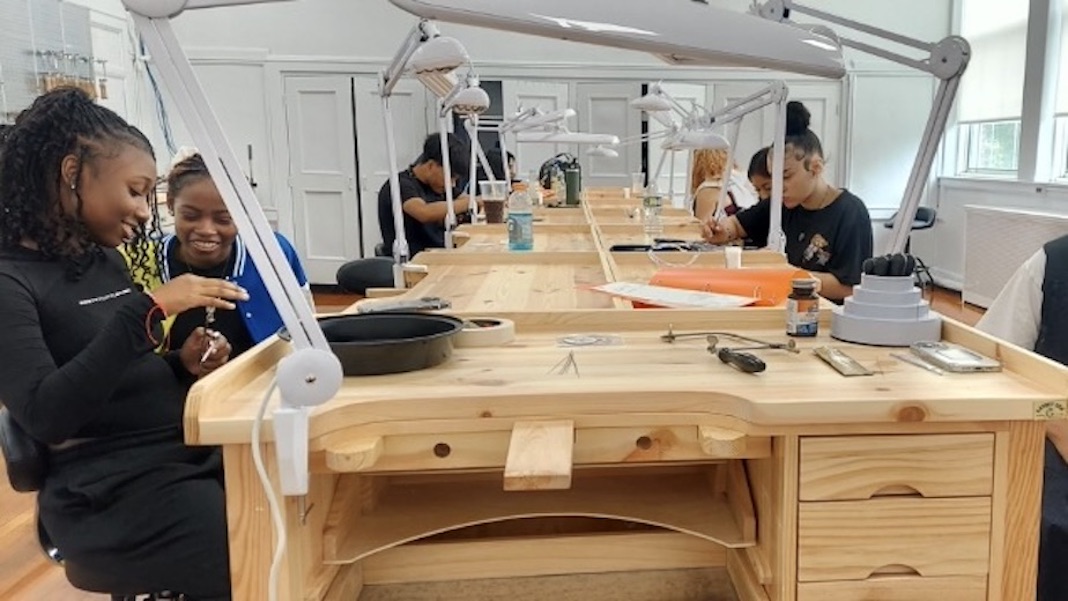

The new Future Jewelers Academy at Baldwin High School in Baldwin, New York, is paving the way for the next generation of jewelers, offering students hands-on training in the art of jewelry making. This fall, the jewelry education program is providing crucial trade skills while opening doors to exciting careers in the diamond jewelry industry. By fostering a more inclusive future, it mentors young talent, encouraging them to pursue their passion for craftsmanship and innovation.
“It’s been incredible watching the students quickly master essential metalworking skills,” said instructors Ms. Jinbi Park and Ms. Micha Proietto.
According to Ms. Jinbi Park and Ms. Micha Proietto, in just two months, students have gone from unfamiliar with basic tools to confidently attaching saw blades and piercing metal with precision. In addition to mastering techniques like sawing, piercing, filing, riveting, dapping, and electro-etching, they have completed their Radial Brooch projects. Now, they’re diving into Metal Bead projects and preparing for a final Necklace project that will showcase all the skills they’ve learned.
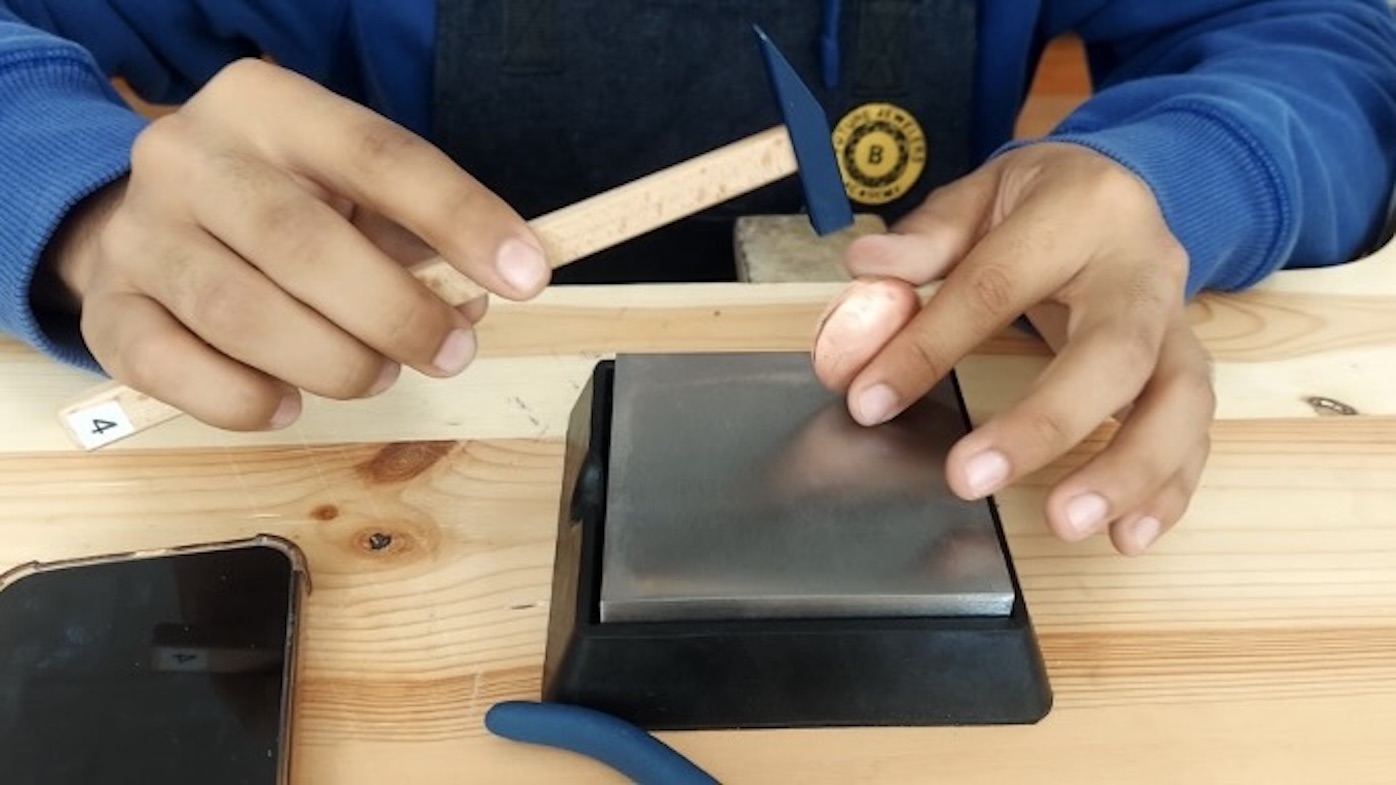
Metal Research Project
In Week 1, students were tasked with exploring the world around them through a creative lens, focusing on metal objects in everyday life. They were asked to find 24 images of metal items that sparked their creativity, whether by taking photographs, sourcing images from magazines, catalogs, or online. The goal was to find pieces that were not jewelry-related but still held visual or design inspiration. Students created a collage of these images, using it as a foundation for their design sketches in their class notebooks. The objective was to expand their design thinking beyond traditional jewelry, encouraging them to explore the vast array of shapes, textures, and forms that metal can take in the world.
Radial Brooch Challenge
In the second week, students dove into hands-on metalworking with the Radial Brooch Challenge. Tasked with creating two brooches, one from a 2-inch copper disc and one from a 3-inch disc, students were encouraged to develop their own unique designs and focus on three-dimensional shaping. They learned essential techniques such as sawing, filing, drilling, riveting, and plier applications. In addition to these core skills, students also learned how to properly handle metal through the annealing and pickling processes, gaining a deeper understanding of the metal’s behavior and how to work with it more effectively.
Metal Etching
In Week 3, students explored the technique of metal etching. Using basic drawing skills, they transferred their own designs onto copper and brass sheets using PNP (Press-N-Peel) paper, a method that allows them to etch intricate patterns without the use of harsh acids. This project introduced them to the concept of surface design and how to apply art directly to metal, offering a fresh approach to personalization and pattern creation in jewelry.
Metal Bead Making
By Week 4, students were ready to take their skills further with the Metal Bead project. Using their own etched metal designs, they cut out discs to create a series of copper or brass beads. The focus here was on refining sawing, dapping, drilling, and riveting techniques as they assembled the beads into finished pieces. This project helped students integrate their etching work into functional jewelry elements, pushing them to think about how form and function work together.
Chain Project
In week 5 and beyond, the students are now moving into the next phase of their training with the Chain Project. This project will involve creating intricate chain pieces using wire knitting, Byzantine links, and Jens Pins linkage techniques. Each student will craft either three 6-inch bracelets or two 18-inch necklaces. This project promises to deepen their understanding of chain construction and the delicate work that goes into linking metal components together into cohesive, wearable art.
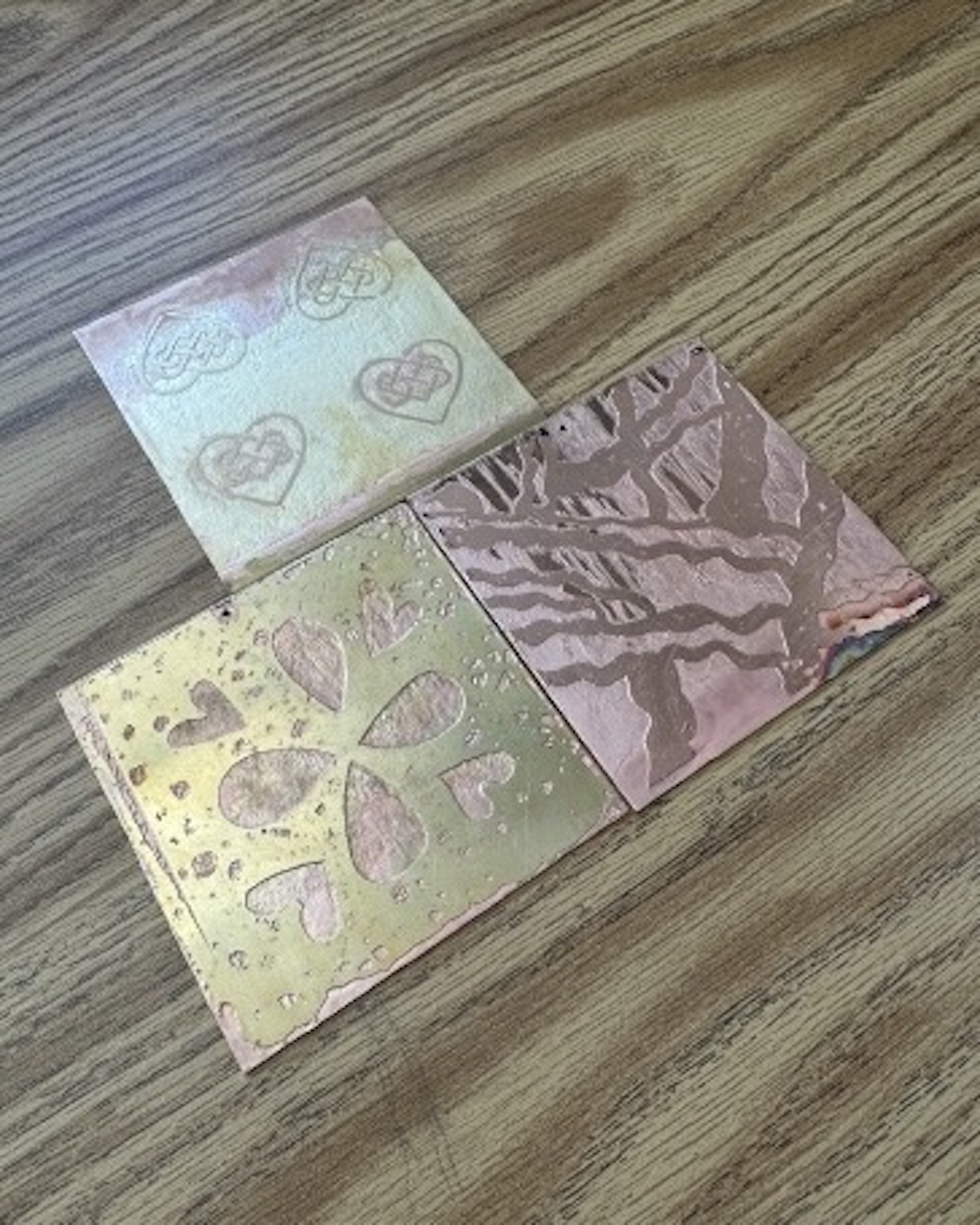
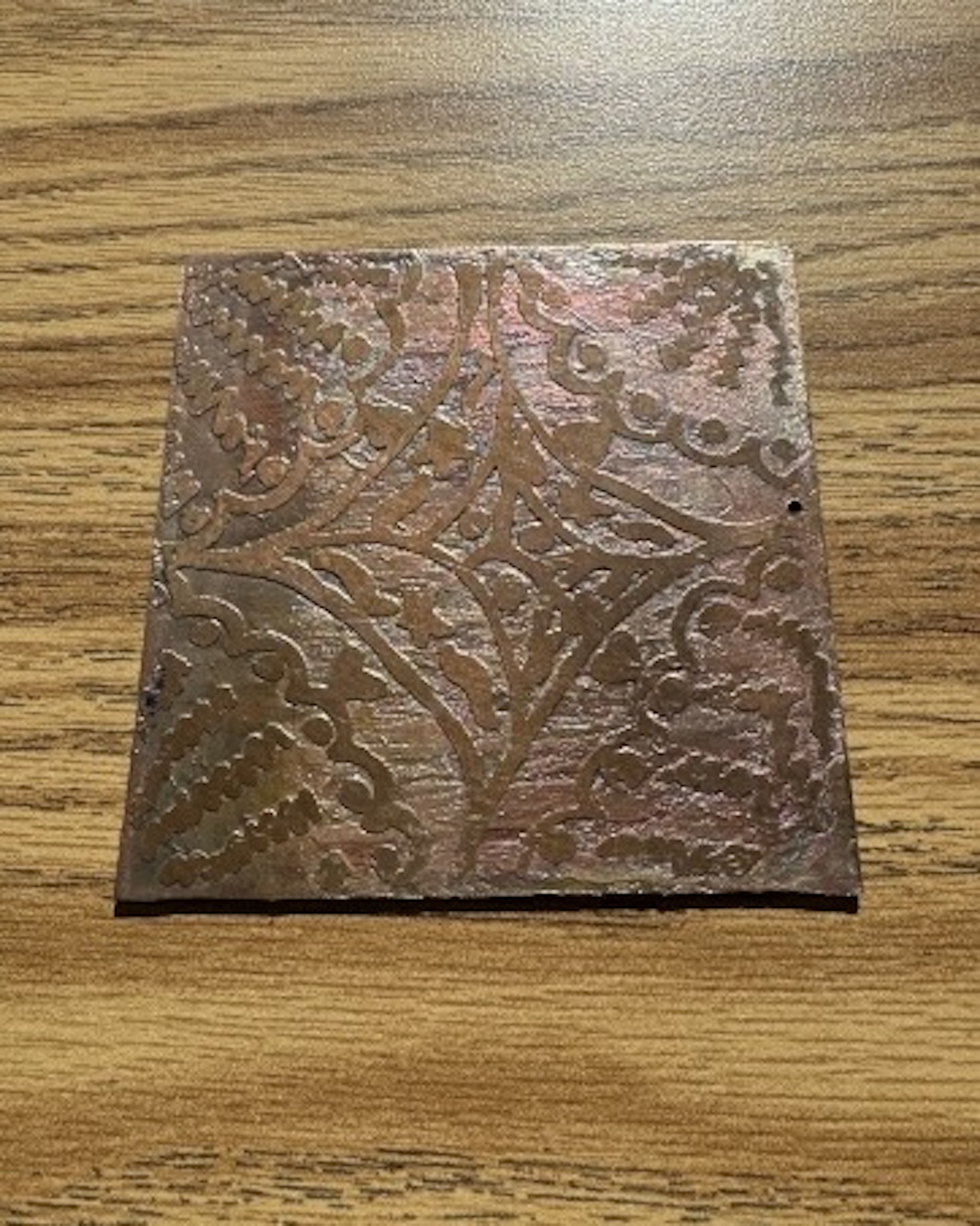
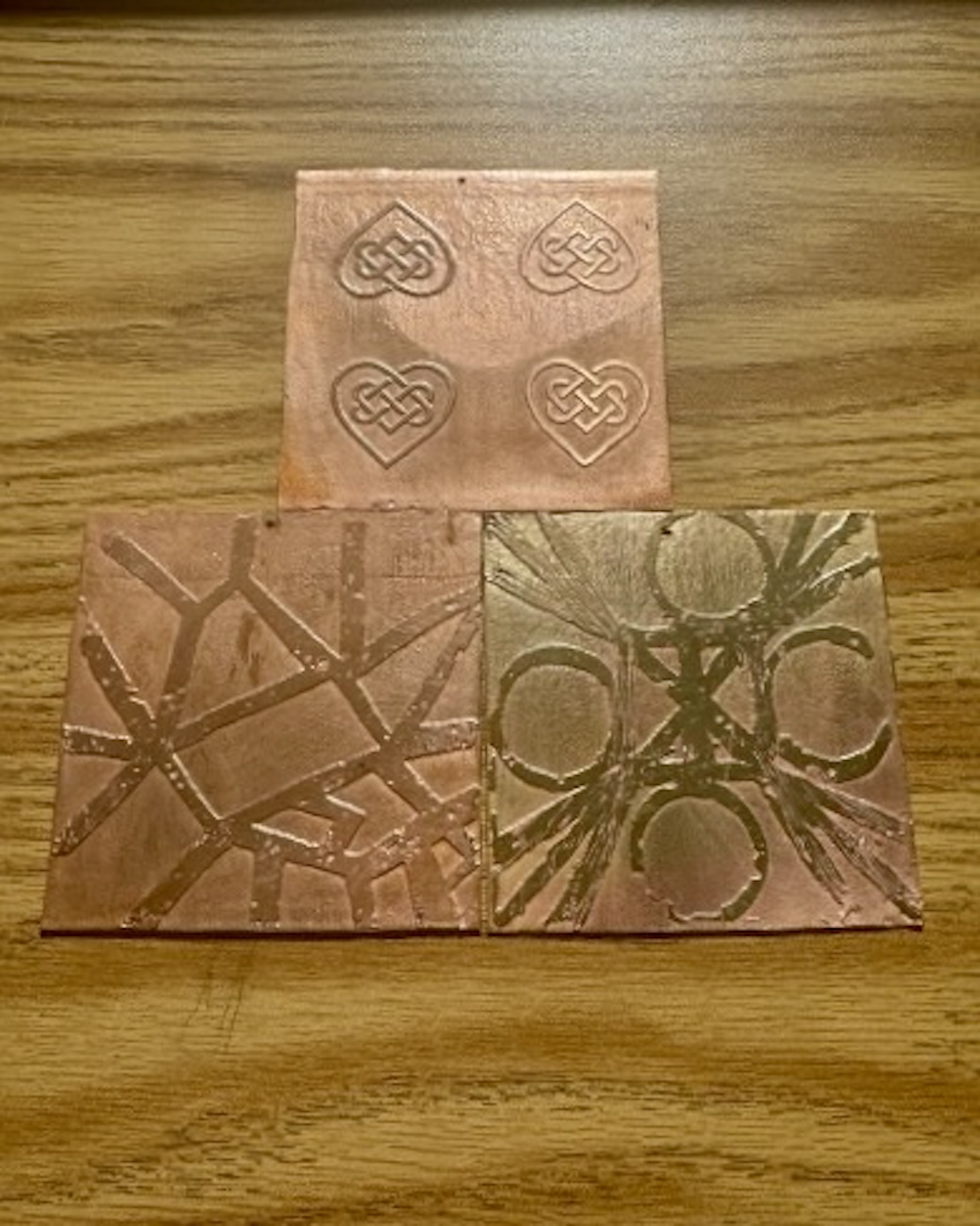
Each week builds on the skills learned in the previous, and by the end of the course, students will have a solid foundation in metalworking, design, and the creation of functional, artistic jewelry.
When not working with metal, students are sharpening their business acumen, learning about entrepreneurship, branding, marketing, and practicing their drawing and design techniques.
Stay tuned to follow the students’ journey as they continue to build their technical expertise and grow their passion for jewelry making.
The Jewelry Education Program offers students:
- The curriculum will include the implementation of subjects such as science, technology, engineering, art, and mathematics (STE(A)M), as they relate to the gem and jewelry industry.
- Students will learn modern and ancient techniques in jewelry manufacturing.
- Unparalleled mentorship and vendor access across the entire jewelry supply chain.
What’s to Come!
Second Semester Skills:
In the second semester, students will tackle a series of advanced projects that refine their metalworking and design skills. The Chain Project will introduce students to the intricacies of chain making and the Clasp Project will challenge students to explore the mechanics of fastening jewelry. They will research various bracelet and necklace clasps online and then create three different types of clasps: a forged “S” clasp, a forged fish-hook clasp, and a toggle clasp, all designed to work seamlessly with their chains. Through this project, students will develop their skills in forging and learn how to design practical components that complement their jewelry pieces. Finally, the Tab-Hinge Necklace Project will push students to combine several techniques in a single piece. In this project, they will design and create a necklace using the hydraulic press, rivets, stamping, etching, and a cold connection tab hinge. This project will allow students to experiment with texture and dimension while learning how to assemble more complex designs with advanced techniques.
BIJC Education Committee

Board President

Board Treasurer & Founding President (2020-2023)

Education Chair

Board Secretary
The Black in Jewelry Coalition (BIJC) is the first international non-profit membership association dedicated to the inclusion and advancement of Black professionals within the gem, jewelry, and watch industry. Founded in August 2020 by a group of Black professionals in an effort to collectively end systemic racism while improving diversity and inclusion in the jewelry industry. The BIJC’s mission is for the advancement of Black professionals within the gem and jewelry industry through networking, education, representation, and an abundance of resources. Promoting change in the jewelry industry through the fundamental understanding that by uniting resources and partnering with allies, they cultivate growth and create opportunities through an alliance that is for us, by us. The BIJC provides tools and resources for professional success, growth, and recruitment for increased representation through heightened awareness.



